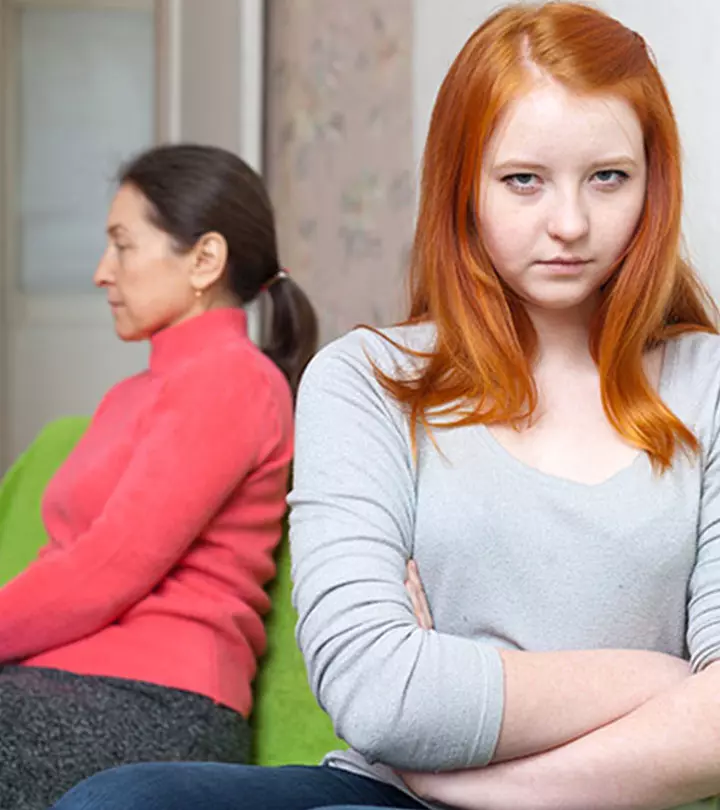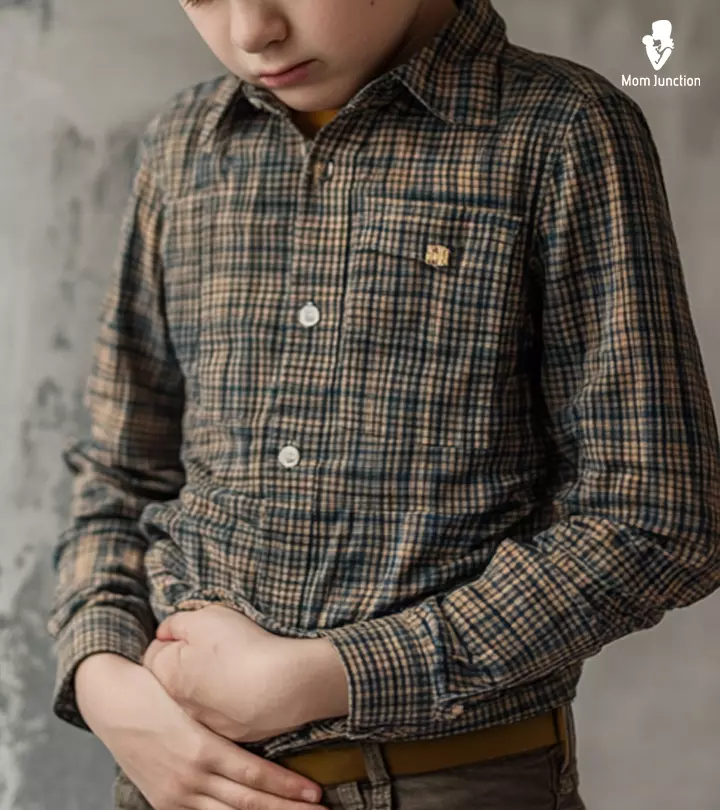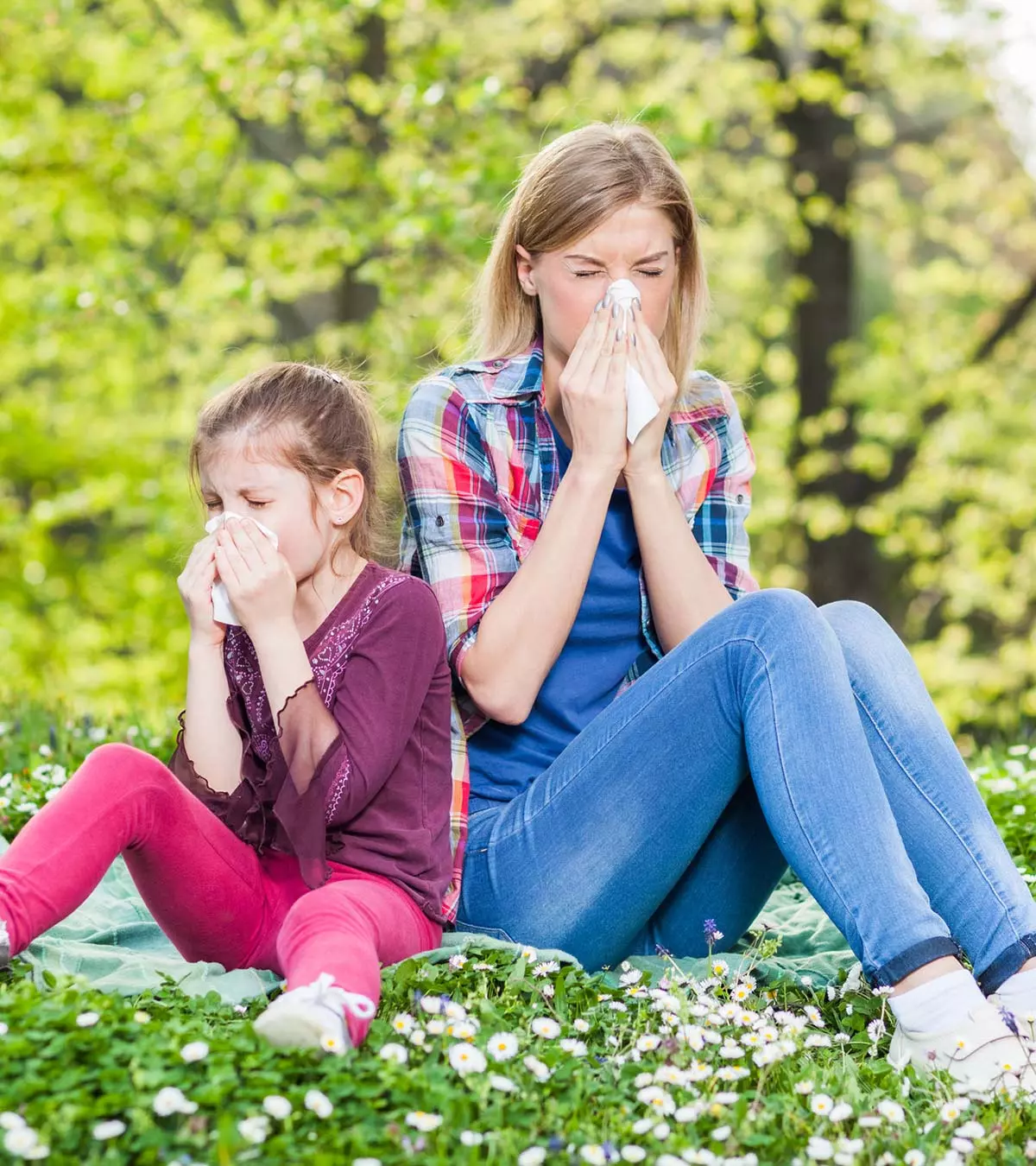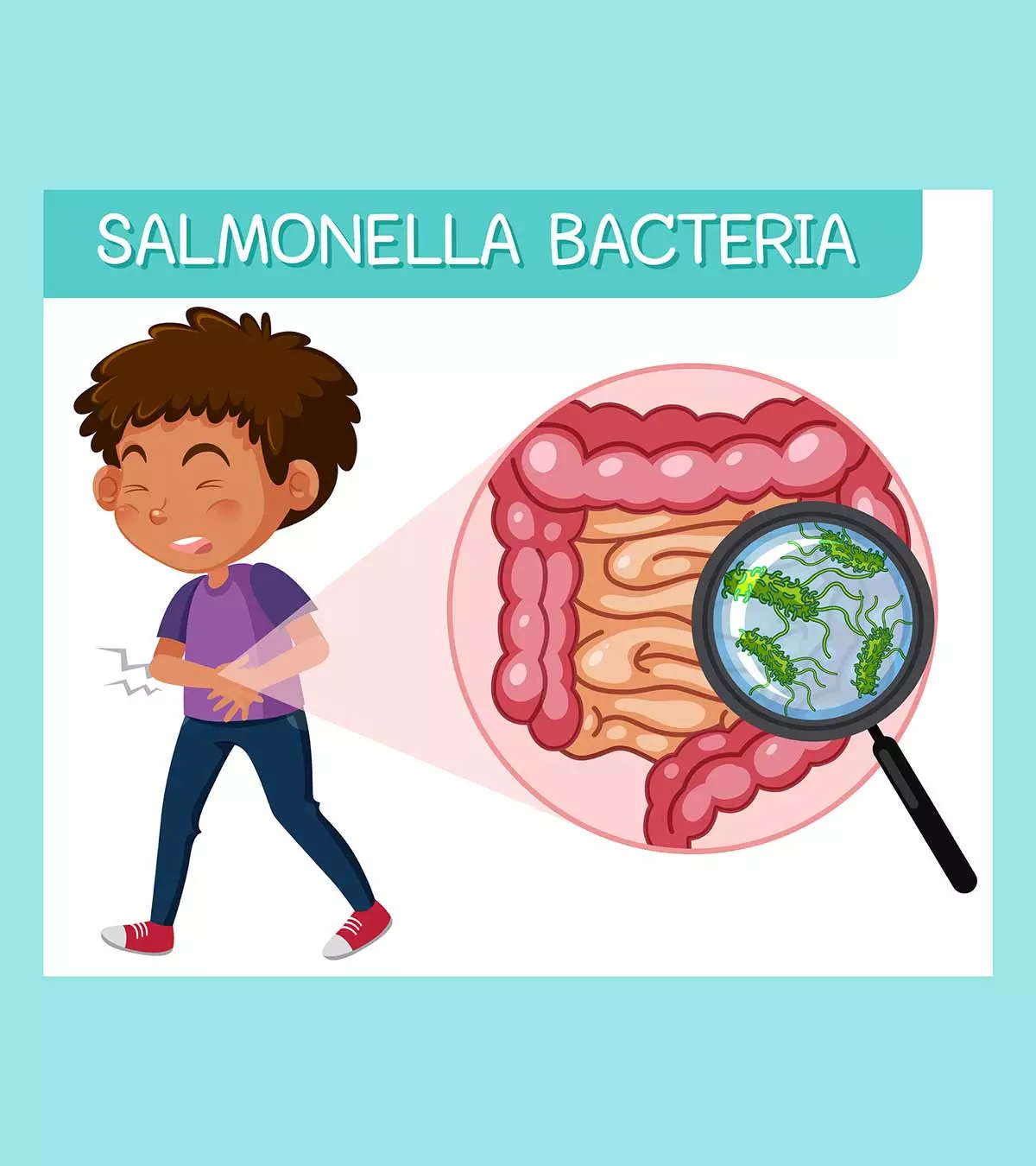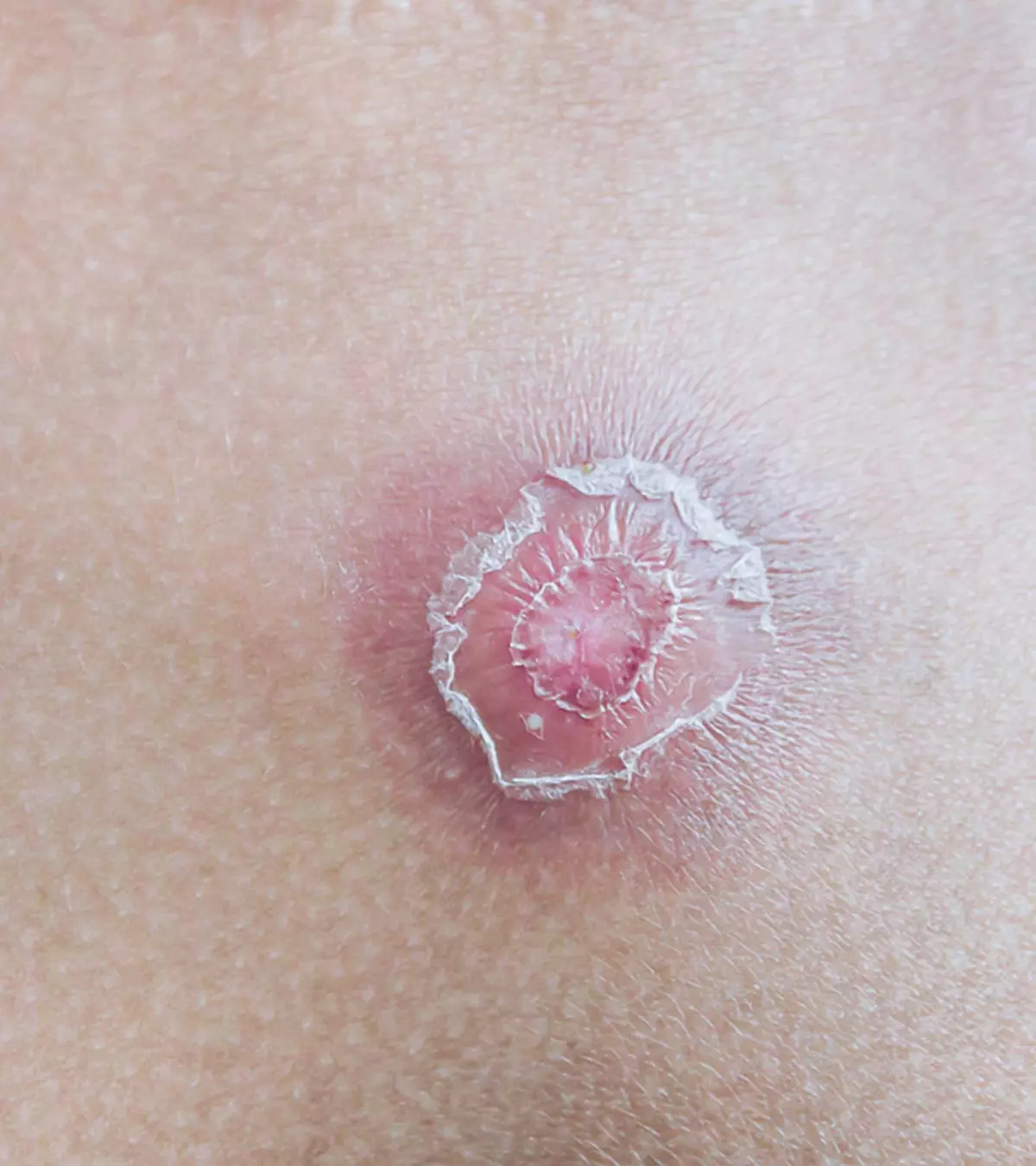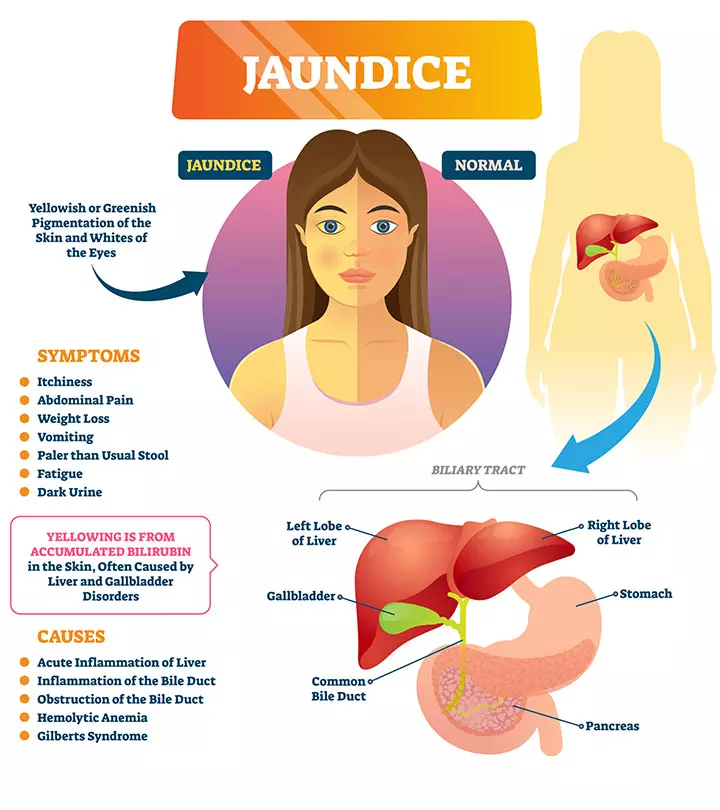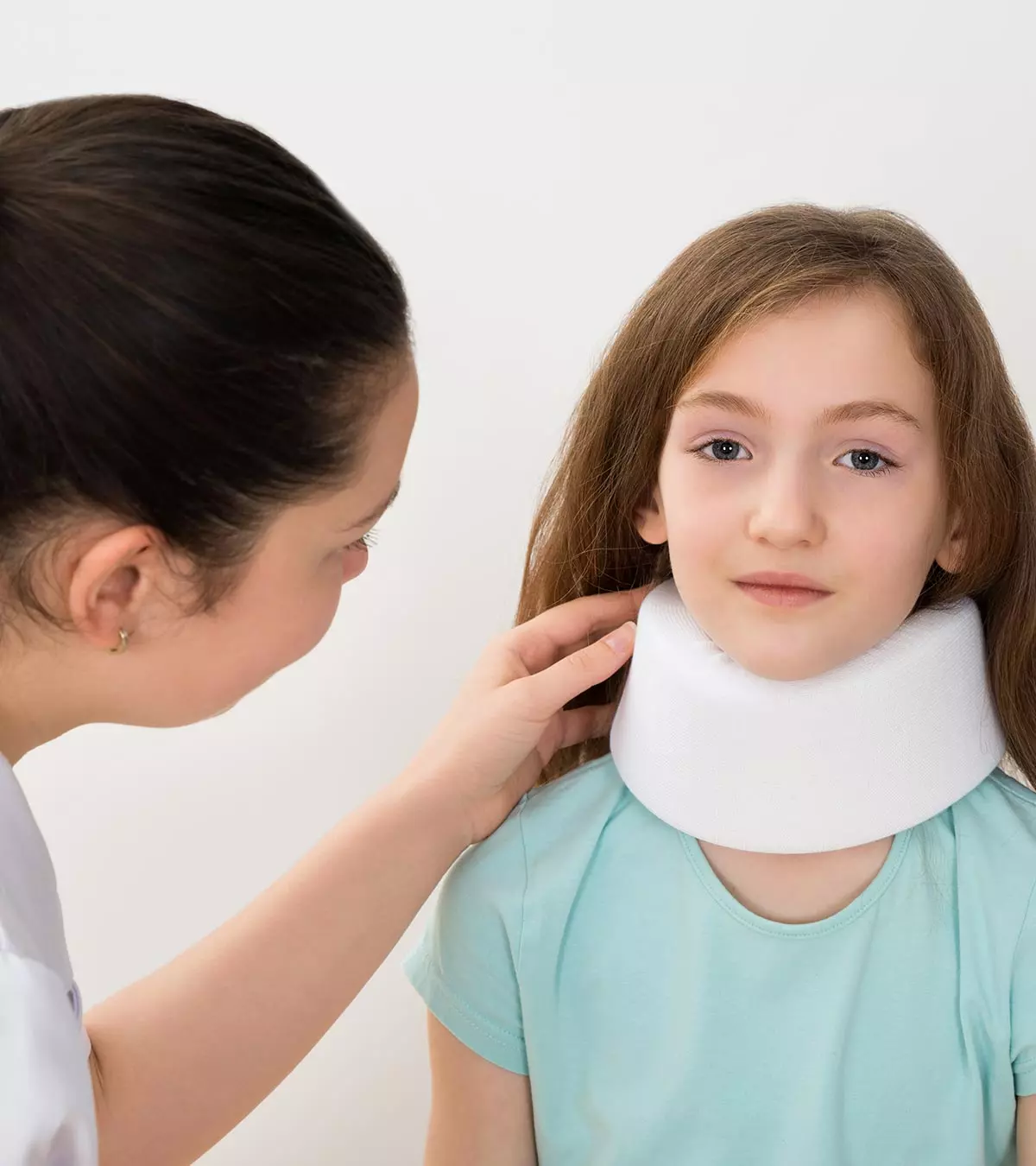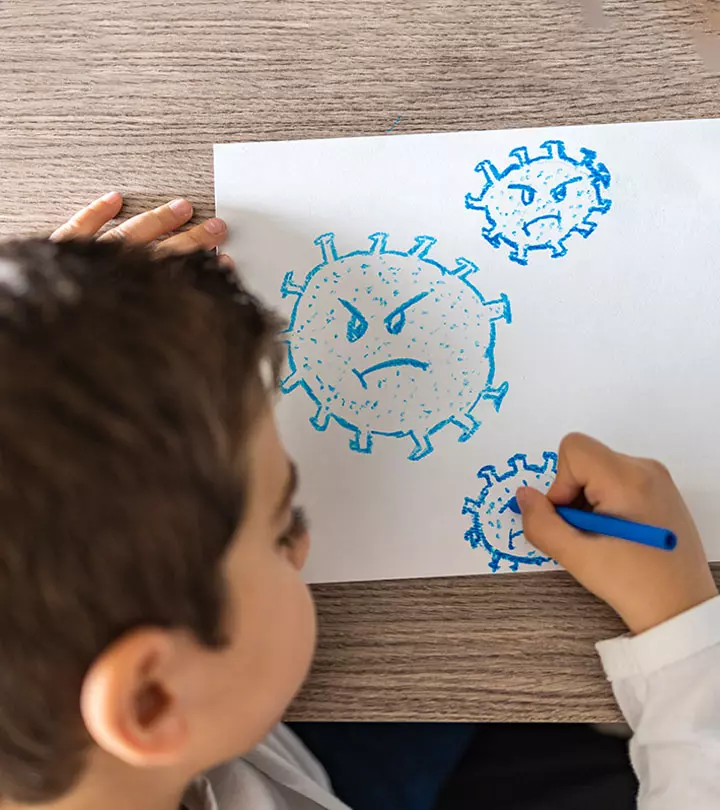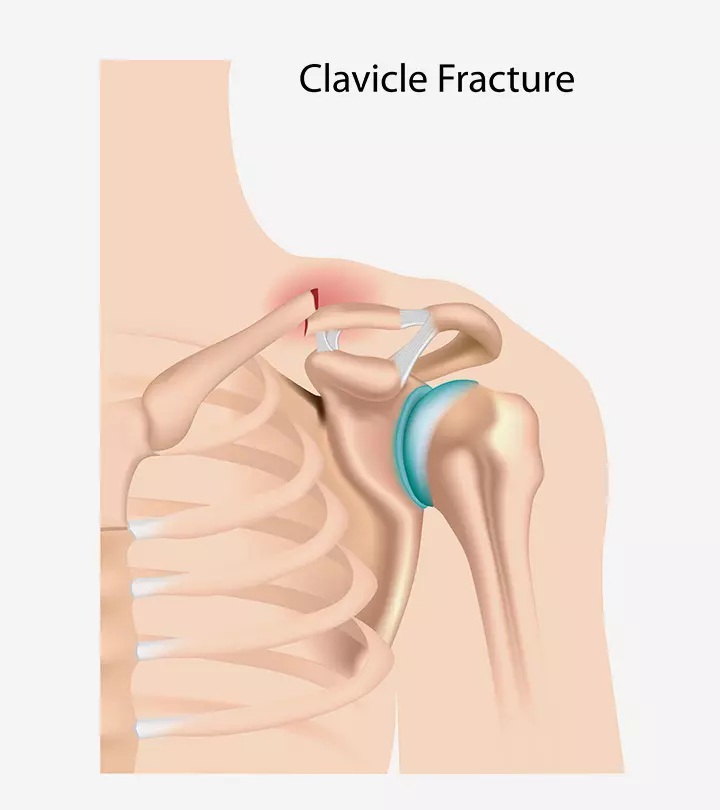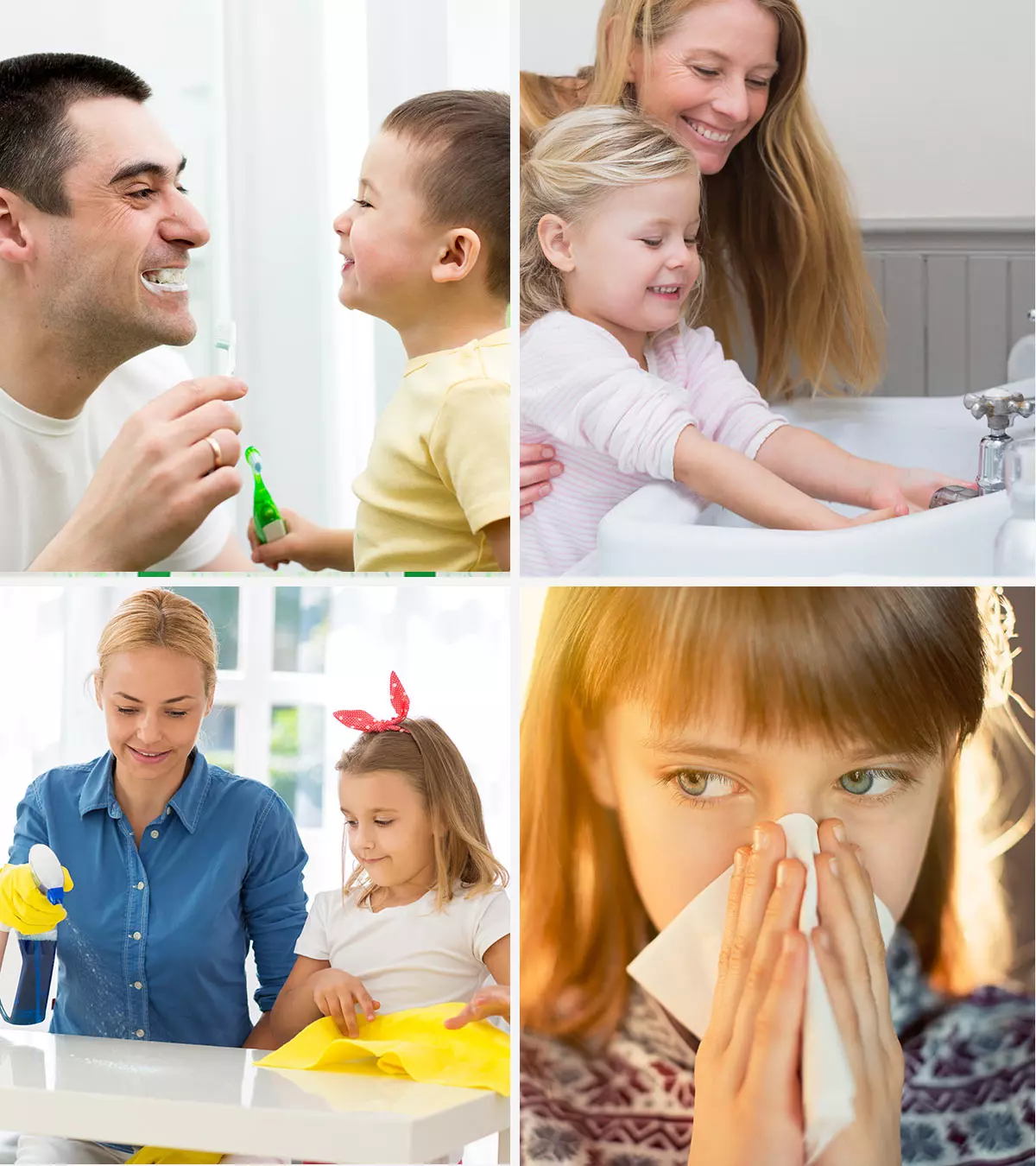
Image: MomJunction Design Team
Parents must educate their children on personal hygiene for kids from their early years. According to the Centers for Disease Control and Prevention (CDC), multiple diseases and ailments can be prevented by maintaining proper self-hygiene and frequently washing the body parts (1).
Many infections spread via the oral-fecal route or in the form of droplets from the nasal passages. Hence, teaching aspects of personal hygiene and implementing a set of hygiene practices helps control infections in such cases.
Browse through this post to understand the significance of personal hygiene for children and some tips to help your children follow the rules of personal hygiene.
Key Pointers
- It is important for children to follow a personal hygiene routine to maintain a healthy body.
- Children should learn various hygiene habits such as food hygiene, hand hygiene, oral hygiene, and body hygiene.
- Following these habits regularly will help protect children from harmful illnesses.
- Good hygiene habits also help restrict the spread of infections among children.
- Explaining these habits through fun activities and being a good role model can help encourage children to follow them.
Personal Hygiene For Children – What Is It?
Personal hygiene comprises various day-to-day activities such as bathing, brushing teeth, and washing hands.
Whether at school, a park, or any other place, children come into contact with dirt and dust that carry infection-causing microorganisms. Kids also tend to put their hands and toys in their mouth. Thus, germs could find their way into the child’s body, causing various diseases and infections. You can prevent this by teaching them personal hygiene habits.
Importance Of Personal Hygiene For Children
Children who live in unhygienic conditions with poor sanitation are prone to illnesses as their immune system is not as strong as that of the adults.
Good personal hygiene habits enable your children to:
- Stay healthy, free from illnesses and diseases caused due to bacteria.
- Feel good about themselves.
- Maintain and enjoy a healthy body image – people with poor personal hygiene have a negative body image, which can disrupt their social life.
- Feel confident in social settings, reducing the likelihood of bullying or social isolation.
- Developing a healthy personality – being clean, well-dressed and well-represented boosts one’s self-image, which in turn increases their confidence and their chances of success in professional as well as social lives.
- They are prevented from getting repeated infections and this results in better weight gain.
Children do not have the knowledge or skills to take care of their hygiene. Therefore, parents need to oversee their habits. The best way to teach kids about hygiene is to start early, with simple practices at home. Read on to know more about healthy habits for kids that you can help your child develop.
Types Of Personal Hygiene
Whether your child is at school or home, eating, sleeping, or playing, or helping you in the kitchen, they should maintain cleanliness. Because cleanliness is not just about keeping oneself clean, it is also about keeping the surroundings clean. Here are a few types of personal hygiene your child should be aware of.
1. Food hygiene for kids
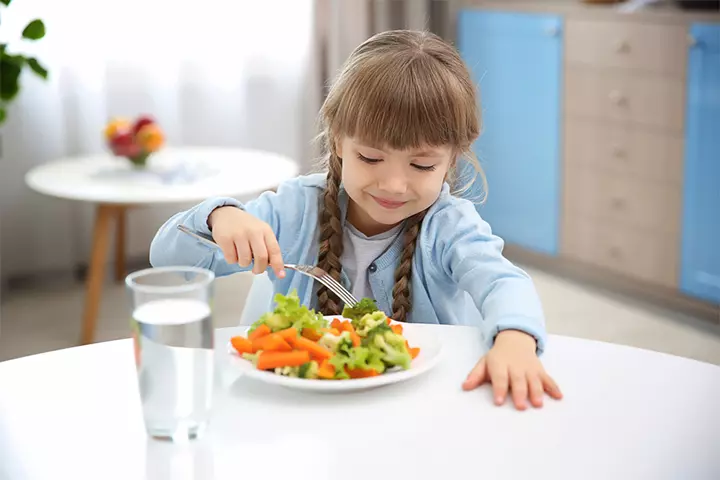
Unhealthy eating habits could lead to food poisoning, which causes vomiting, diarrhea, or tummy pains. It can also lead to typhoid, hepatitis A or choleraiA fatal disease characterized by diarrhea commonly caused by the consumption of Vibrio cholera contaminated food and water . Even respiratory infections and flu develop due to improper hygiene. It is important to maintain hygiene when eating, serving, or preparing food to prevent bacteria from spreading from one person to another. Tell your children about the importance of food hygiene. At the same time, mothers should maintain their own hygiene.
When you are teaching your children about food hygiene, start with the basics – talk to them about germs and bacteria. Explain to them how quickly bacteria can spread from their hands to the food and into the mouth or nose. Use practical ways. Here are a few food hygiene habits parents should teach their children.
Children should be told to clean their hands thoroughly before handling food, and specifically after using the washroom. This needs to be reinforced every time. Here are some hand wash rules you could teach your child.
- Always wash hands with soap and clean water before touching or handling food.
- Rinse and rub soap for 1-2 minutes or for at least 20 seconds. Dr. Hansa Bhargava, a physician from Atlanta, Georgia, says, “Germs can get anywhere on your hands; if you wash for 20 seconds, it gives you a chance to clean all around your hands properly.”
- It is essential to wash hands before eating after eating if they have been to the toilet or were playing outside.
- Clean hands thoroughly so that there are no traces of soap left. Use fresh water to clear the soap completely.
- Wash your hands frequently when helping in the kitchen, as vegetables, raw meat, and others may be carrying bacteria before they are cooked.
- Wash your hands after eating food.
- Mothers should wash their hands before cooking food or feeding the child or breast feeding the baby.
- Always use a clean cloth to wipe your hands and mouth.
- Teach your children to cover the food containers with lids after serving the contents on their plates.
- If your children often help you in the kitchen, then teach them the basics of storing foods and hygienic cooking.
2. Hand hygiene for kids
A simple act like washing hands can go a long way.
- According to the CDC, washing hands with soap water could reduce diarrheal diseases by 30% and respiratory infections by 20% (2).
- As soon as your children come home from school or play, remind them to wash their hands and feet before touching any food items.
- If your children are young, give them a practical lesson on how to wash their hands thoroughly, and not just wet them with water. Here are the steps for it.
1. Wet your hands with clean water.
2. Apply soap and rub your hands together to lather up for about 1-2 minutes.
3. Clean in between fingers, under the nails and up to the wrist
4. Wash away the soap completely with clean water - Dry the hands with a clean towel.
- Emphasize on nail care, check your children’s nails and cut them regularly, as mud and dirt can get deposited under the nails and spread infections.
- Instruct your children never to put dirty hands in mouth, bite nails, or wipe their face or eyes with filthy hands.
 Did you know?
Did you know?Make it a habit for your children to wash hands before and after touching or eating food. Tell them they also need to wash their hands after:
- Using the toilet
- Being outside, riding a bike, playing in the sand, etc.
- Cleaning the house
- Cleaning their nose, sneezing or coughing
- Touching an animal, especially after they pet an animal or touch an insect
- Visiting a sick friend or relative, or returning from a hospital
Handwashing is a simple activity that takes just a few seconds of your time. But it is a highly effective way to keep germs and infections away.
3. Body hygiene for kids
One of the most important aspects of personal hygiene is taking care of your body. Body hygiene is about keeping every part of your body clean to stay healthy and presentable. Healthy body hygiene habits include taking care of the skin, hair, feet, and the pubic region.
Skin
The skin is the largest organ in the body. It covers and protects all the other organs from external elements while being exposed to different kinds of microorganisms. Accumulation of bacteria on the skin can cause body odor. So, it is necessary to teach children different ways to keep their skin clean. The infection will spread if there is a boil somewhere on the skin and the child scratches there and touches another part of the body.
Here are a few ways in which you can keep your skin clean.
- Bathing regularly
- Teach your kids to take a shower twice a day — before they head out to school and after they come back in the evening after playing outside.
- Teach them how to clean the different parts of the body – the hands, armpits, legs, feet, groin, joints, back, belly button (navel), elbows, and knees. Show them how to do it and then let them practice it.
- Make sure that they use soap for bathing, and pat dry the body after bathing.
- Take extra care when teaching them to clean the face – make sure they clean their ears and the neck, which they may overlook.
- Children tend to finish off bathing quickly, so make sure they spend enough time taking a bath. Also, reward them every time they bathe thoroughly.
 Did you know?
Did you know?Hair
- Poor hair care in children can lead to problems like head lice, dandruff, and other scalp infections. Children should be taught to take care of hair along with their skin.
- It is important to wash the hair at least twice a week to keep it free from dirt and grease.
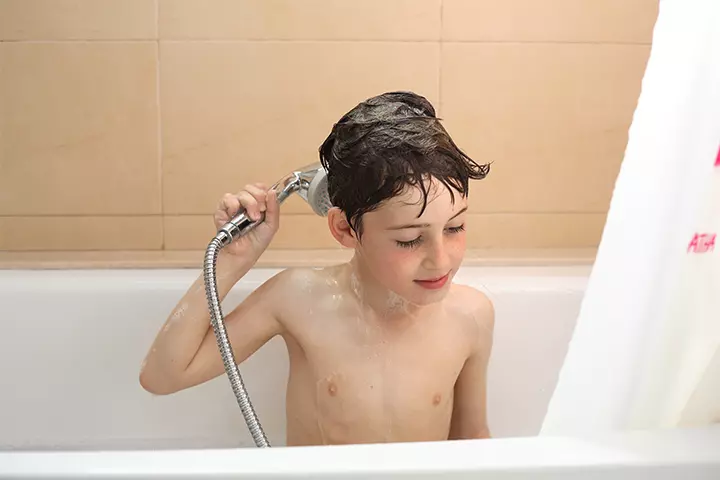
- When washing the hair, teach your children to wash the scalp with soap and rinse it thoroughly with clean water.
- Children are prone to getting head lice, which is a problem that should be dealt with immediately.
- Encourage your child to keep hair tied or braided, to avoid head-to-head contact with other kids who may have lice. This is one way of lice prevention.
- Teach your children never to share personal objects like combs, pillows, and hats.
- If your girl has long hair, always tell her not to leave the hair down. Let her tie it up to prevent the accumulation of too much dirt or grime.
Feet
Ever heard of the phrase “smelly feet”? That’s what happens when the bacteria on the feet come into contact with sweat. Children who wear shoes all day, especially without socks, tend to accumulate more dirt on their feet, which the bacteria feed off. Teach your children foot care by helping them keep their feet clean with these tips.
- Instruct your child to wash their feet every time they go out and come into the house (to play or from school)
- Clean the feet properly by scrubbing with soap between the toes, the soles of the feet, and under the toenails.
- Use a clean cloth to wipe them dry.
- Encourage them to keep their shoes clean and dry. Dirty shoes have bacteria, which get transferred to the feet.
Always check and wash their socks regularly. - If your child gets injured during play, then teach them how they can keep their wounds clean to avoid skin infections.
 Quick tip
Quick tipPubic region
Body care also includes cleansing of the pubic region.
- For girls, the vagina is one part of the body that can clean itself, and using vaginal douchesiInternal cleaning of the vagina with a solution for cleanliness and prevention of infections can disrupt this natural balance. Hence they are not recommended (3). Girls are more prone to develop urinary tract infections. Teach your daughter to wash around the genital region with soap and water, as she would the rest of the body. You should also talk to your young girls about how to use a tampon or a pad safely, and how often to change them for maintaining menstrual hygiene.
- Boys should be taught early on to clean their genitalia. They should gently wash the penis and scrotum every day with soap and clean, warm water. Also, if they have the foreskin, teach them to pull it back and wash underneath with warm water gently.
Not washing underneath the foreskin can lead to smegma (natural lubricant to keep the penis moist) accumulation, which can result in a foul smell. It can also become a breeding ground for bacteria that causes balanitis, which is the swelling and redness of the tip of the penis (4).
Removal of pubic hair is a personal choice that your boy or girl can make when they are old enough. Experts believe that it is not necessary and does not have any known health benefits (5) (6).
4. Health hygiene for kids
Most children tend to get affected by common colds around six to eight times a year, which is more than that of adults (7).
Therefore, it is important to teach children about health hygiene to prevent germs and bacterial infections from spreading. When your child is down with the flu or any other infectious illness, ensure that they:
- Avoid close contact with other kids – do not send your child to school or for play.
- Teach them coughing etiquettes, like using a tissue to cover the mouth when they cough or sneeze to prevent germs from spreading around. Some viruses like influenza spread through droplets so teach your kid to use a cloth or a handkerchief to cover the mouth when they speak. This is especially true in winters.
- Wash their hands often. If the water is too cold to use, use a hand sanitizer.
- Do not share food, water, bedclothes, or other things that may spread germs to other children in the family.
- Maintain clean surroundings and change their clothes at least twice a day.
As your children may not be able to keep themselves and their surroundings always clean, it is your responsibility to support them.
5. Oral hygiene
Oral hygiene is as important as hand hygiene or skin hygiene in children.
An unclean mouth can give out bad odor and cause cavities, which can be avoided when children have good oral hygiene. Here is how you can encourage them to keep up their oral care.
- Teach them dental hygiene and ensure your child brushes twice daily, cleaning even the corners of the mouth thoroughly.
- Teach them how to floss and remind them to do it each time they brush.
- Ask them to wash their mouth with water after food or after eating candies.
- Simple measures such as gargling with warm salt water or a mouthwash is effective.
- Schedule a dentist visit once every six months.
6. Hygiene at home
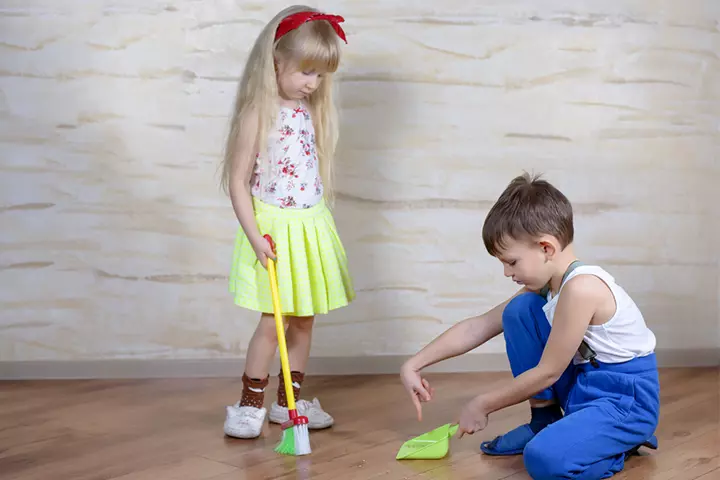
In addition to personal hygiene, children should also be taught to maintain hygiene when they are at home. Here are a few things you can teach them to do.
- Teach your kids to wear clean clothes every day. They may like a specific dress, t-shirt or jeans, but explain that they should wear them only if it is clean.
- Tell them to keep their surroundings clean and everything in its place.
- Make them put the bowl or plate in the sink after they eat a meal and wash their hands.
- Teach them to clean if they spill or drop something on the floor or any other surface. If your kid is too young to be able to clean it, help him do it.
- Let them follow basic toilet and bathroom cleanliness standards – they must flush the toilet after use, encourage proper wiping, use the restroom supplies, throw used tissues or other garbage in the bin, etc.
You cannot teach your kids these basic personal hygiene habits overnight. Developing healthy habits is a process that takes time and should be handled patiently.
Tips For Teaching Kids About Personal Hygiene
Just telling your kids what to do won’t work. It’s not just about getting them to practice hygiene; it’s about making personal hygiene a natural part of their daily lives. An individual’s hygiene habits tell you a lot about his or her personality. If you are wondering how to develop good habits in children, here are a few tips to inculcate personal hygiene habits in your children.
1. Explain good and bad habits
Start with something they already know – good and bad. Kids know that they are supposed to do what is good and not the bad. So, list out the good and bad hygiene habits – clearly tell them what is considered good and healthy, and what is bad or unhealthy. Repeat it as many times as you can in different situations. You can reiterate these points through play – a quick quiz in the car or as they step into the bath.
Most importantly, praise them when they display good hygiene. That way, they’ll remember better.
2. Start with the basics – hand washing and bathing
Children shut their minds to things that they find overwhelming. Dumping too much information or instructions about personal hygiene will yield no results. Start with something simple like washing hands and bathing regularly and build other practices from there.
3. Use the right resources
The best way to teach a kid is by demonstration. And to do that, you need to have the right resources. If you want your child to use soap to wash hands, you need to make sure there is soap in the dispenser. The chances of your kid washing hands are better when there are supplies in stock.
4. Explain concepts of germs and bacteria
Introduce the concept of germs and bacteria early on. Tell how they can catch germs and what happens when they don’t wash them off. Kids tend to do something if they understand it better. Make sure you emphasize the importance of hygiene and germ prevention, but do not exaggerate so much that they develop a phobia.
5. Talk about nice smell and foul smell
Our noses can recognize a wide range of smells, and our instincts tell us which smells are good and which are bad. Kids also know, instinctively, when something smells bad. But they may not be able to label it ‘bad’. You can help them learn the difference between good and bad smells and explain that they should build good hygiene habits to keep bad or “stinky” smells away.
6. Talk about grooming

Kids who are poorly dressed may be teased, or even bullied at school. To avoid that, it is imperative that your children wear clean clothes, smell fresh, and stay clean and hygienic in school as well as at home. Talk to your kids about the different grooming activities like wearing clean, pressed clothes, combing their hair, polishing their shoes, and keeping their school and lunch bag clean and hygienic. Help them learn about grooming by practice.
7. Fun with hygiene
Kids remember something better when it is fun and makes them happy. Don’t make hygiene a dreadful topic for children. Make it fun. Try to teach them about personal hygiene in different ways, such as games, fun activities, and online games. You may also introduce role-playing games where children can pretend to be doctors or hygiene superheroes to help reinforce the importance of hygiene in an engaging way.
8. Be an example
To encourage your child to follow good hygiene practices, you must start practicing them yourself. Be an example. Do little things like washing hands, cleaning the kitchen or the table, brushing teeth, etc. together.
Personal Hygiene Activities For Kids
Children love to play and learn better through activities. Here are a few games and activities you can try to make personal hygiene fun for your kids.
1. Germ transfer game
Germ Transfer is a fun game that teaches how germs get transferred from one person to another. For this game, you will need some washable paint. Apply the paint to your hands without the kids looking at you and then pretend to sneeze. Then go about your way, touching everything you can with your hands and spreading the paint. Ask the kids to go to these places and touch the paint.
After the exercise, ask the children to count the number of locations the “germs” have been transferred to. Also, highlight the fact that they ‘got’ germs from you because you didn’t wash your hands after sneezing.
2. Glitter hands

Glitter Hands is a fun game that lets the kids get a little dirty. According to the Centers for Disease Control and Prevention (CDC), kids should scrub and wash hands with soap for at least 20 seconds to get rid of germs (8). To explain that, take some glitter and apply it to your child’s hands. Ask them to wash their hands now, using soap and tap water.
Glitter is naturally sticky and won’t go away with a quick rinse under the tap. It will take your kid some time to get rid of all the glitter from the hands. Tell them that like glitter, germs can only be removed by washing hands for at least 30 seconds, not just a rinse.
3. Good habit, bad habit
This is a fun trivia kind of game you can play with kids anytime, anywhere. Make a list of activities that your child needs to identify as either a good habit or a bad habit. Make it a point to include your kid’s habits and remind them of what they should continue doing and what they should not. For every right answer, give them a treat or a word of praise.
4. Hygiene charades
Charades are fun. Play charades with your family, where you or your kids will have to enact right or wrong hygiene practices. This game makes learning about hygiene fun and remembering it easier.
5. Personal hygiene worksheets
The internet has several personal hygiene worksheets that you can use to teach your children about it. You can use these worksheets online or print and use them as checklists.
Frequently Asked Questions
1. What are the side effects of poor personal hygiene?
Lack of proper hygiene can increase the risk for infections, dermatitisiSkin inflammation commonly characterized by itchiness and redness , and contagious skin diseases (9).
2. What is the difference between hygiene and cleanliness?
Hygiene refers to preventing diseases by different means, including cleanliness. However, cleanliness refers to cleaning different surfaces to remove contaminants or dirt using soap, detergents, etc. (10).
3. How can you incorporate discussions about personal hygiene into your family’s daily routine?
To incorporate discussions related to personal hygiene into your daily routine, you may start brushing your teeth in the morning and night as a family. This way, it is easier for children to actually perform the activity and understand its importance. You may also do grooming activities with your child or wash hands after a muddy job with age-appropriate language. This may help them to understand the importance of removing germs or bacteria from their body and staying healthy.
4. How can you help kids understand the importance of avoiding sharing personal items like toothbrushes or hairbrushes?
You can try making your kids understand the importance of avoiding sharing toothbrushes and hairbrushes with the help of videos available online. The interactive videos online will help identify germs in their mouth, hair, and scalp that can accumulate in their toothbrushes and hairbrushes over time. It will help children refrain from sharing it with others to not let others get infected with head lice or have gum problems (12) (13). You should also ensure to change them every 2-3 months as they tend to wear out.
5. What are some age-appropriate hygiene practices?
For toddlers, encourage them to play with water and soap during bathtime to familiarize them with the concept. For preschoolers, you can teach them songs about handwashing and cleanliness to make hygiene fun. Lastly, for school-aged children, have meaningful discussions about hygiene and social interactions. You may also help them learn through engaging activities.
Educate your children about the importance of personal hygiene from a young age since poor hygiene habits may increase their risk of exposure to diseases and infection. Consequently, you may implement hygiene practices and have your kids follow them regularly to prevent exposure to microbial diseases. Have a conversation with your children to explain the significance of hygiene and encourage them to follow good habits using the right resources. You may make it enjoyable by including fun activities that teach them about the critical aspects of personal hygiene.
Infographic: Tips On Educating Children On Personal Hygiene
Parents play a significant role in helping children imbibe good habits and behaviors in life. Teaching them the significance of practicing personal hygiene from an early age to help them stay away from diseases. To make your job easier, we bring valuable tips to help your children learn good hygiene habits. Check out! Illustration: Momjunction Design Team
Illustration: Personal Hygiene For Kids: Importance And Habits To Teach
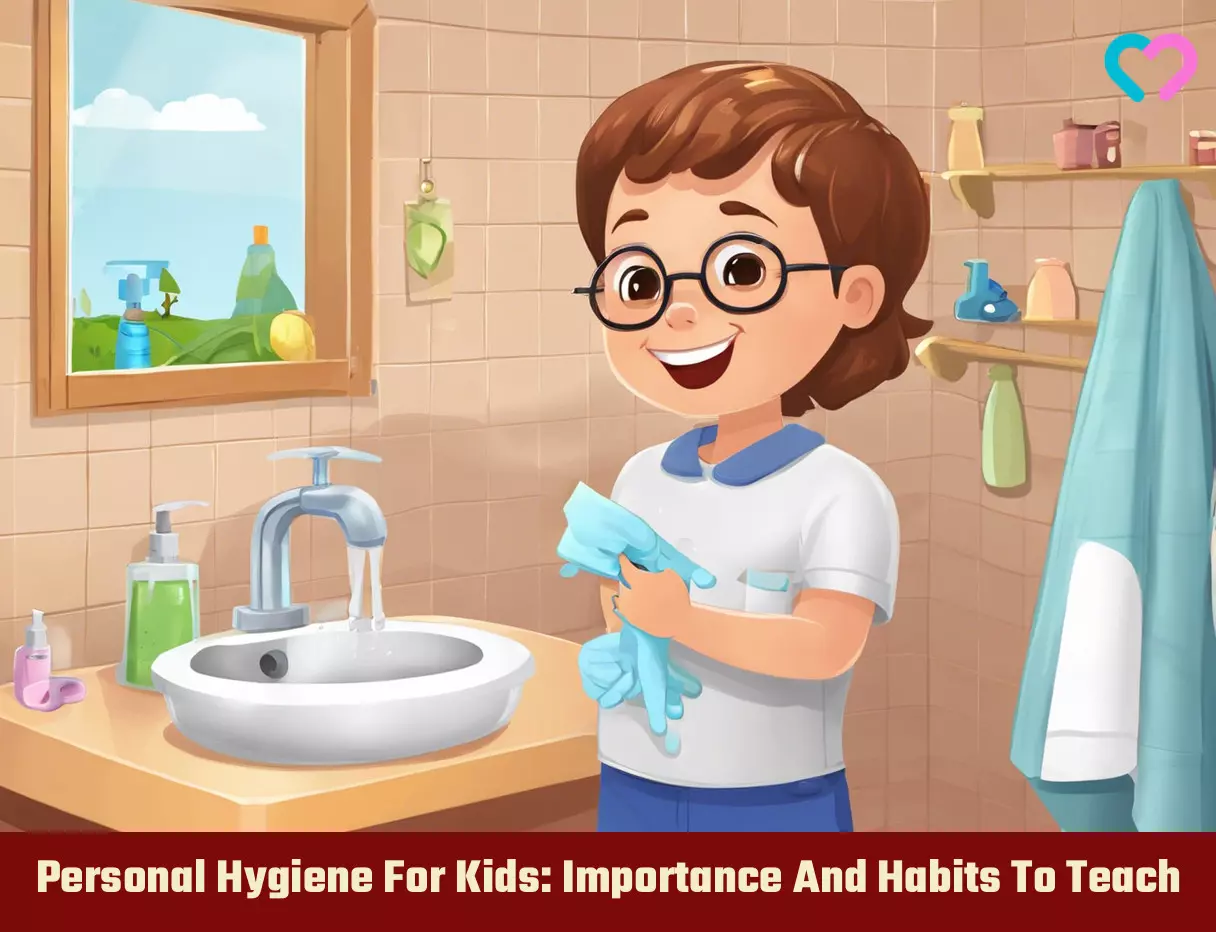
Image: Stable Diffusion/MomJunction Design Team
References
1. Healthy Habits: Facial Cleanliness; Centers for Disease Control and Prevention
2. Handwashing Facts; Centers for Disease Control and Prevention
3. Keeping your vagina clean and healthy; National Health Service
4. How to keep a penis clean; National Health Service
5. Removing Pubic Hair; Center for Young Women’s Health
6. Removing Pubic Hair; Young Men’s Health
7. Common Cold in Children; University of Rochester Medical Centre
8. Hand Hygiene Frequently Asked Questions; Centers for Disease Control and Prevention
9. E Gauchan et al. (2015);Relation of Sociodemographics and Personal Hygiene on Different Childhood Dermatoses; NCBI
10. Hygiene and environmental health; OpenLearn Create
11. 6 Proper Hygiene Habits That Children Should Learn At School; Miami University
12. When sharing isn’t caring: Why sharing your toothbrush is a very bad idea; Oral Health Foundation
13. Head Lice; Children’s Healthcare of Atlanta
Community Experiences
Join the conversation and become a part of our nurturing community! Share your stories, experiences, and insights to connect with fellow parents.
Read full bio of Dr. Mubina Agboatwalla
- Dr. Hansa Bhargava is a board-certified pediatrician and the chief medical officer at Medscape Education. She is the author of ‘Building Happier Kids: Stress-busting Tools for Parents.’ Dr. Bhargava is an alumnus of the University of Toronto and the University of Pennsylvania School of Medicine.
 Dr. Hansa Bhargava is a board-certified pediatrician and the chief medical officer at Medscape Education. She is the author of ‘Building Happier Kids: Stress-busting Tools for Parents.’ Dr. Bhargava is an alumnus of the University of Toronto and the University of Pennsylvania School of Medicine.
Dr. Hansa Bhargava is a board-certified pediatrician and the chief medical officer at Medscape Education. She is the author of ‘Building Happier Kids: Stress-busting Tools for Parents.’ Dr. Bhargava is an alumnus of the University of Toronto and the University of Pennsylvania School of Medicine.
Read full bio of Sagari Gongala
Read full bio of Swati Patwal
Read full bio of Kavita Kankani








